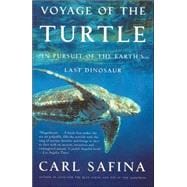
What is included with this book?
| Gratitudes | p. xiii |
| Setting Course | p. 1 |
| Atlantic | |
| Angels of Eden-Trinidad | p. 9 |
| Weight of the World | p. 38 |
| Moonlight in the Sunshine State-Florida | p. 45 |
| Leatherbacks and Cannonballs-South Carolina | p. 73 |
| On the Edge-Georges Bank | p. 117 |
| Animal Magnetism | p. 148 |
| Northeast of Summer-Cape Breton Island | p. 152 |
| Between Oceans | |
| The View from Turtle Island | p. 187 |
| Pacific | |
| The Great Beach-Costa Rica | p. 213 |
| Flying Turtles-Mexico | p. 242 |
| Baja | p. 259 |
| The Other Grand Canyon-Monterey Bay | p. 284 |
| Jamursba Belimbings-New Guinea | p. 317 |
| Chant for the Enchanted | p. 341 |
| A Few Places to See Nesting Sea Turtles | p. 350 |
| References | p. 352 |
| Index | p. 369 |
| Table of Contents provided by Ingram. All Rights Reserved. |
The New copy of this book will include any supplemental materials advertised. Please check the title of the book to determine if it should include any access cards, study guides, lab manuals, CDs, etc.
The Used, Rental and eBook copies of this book are not guaranteed to include any supplemental materials. Typically, only the book itself is included. This is true even if the title states it includes any access cards, study guides, lab manuals, CDs, etc.
Excerpted from Voyage of the Turtle: In Pursuit of the Earth's Last Dinosaur by Carl Safina
All rights reserved by the original copyright owners. Excerpts are provided for display purposes only and may not be reproduced, reprinted or distributed without the written permission of the publisher.